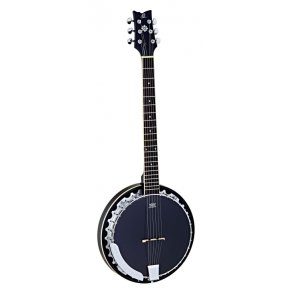Banjo
A banjo is a lively instrument. A real joy-spreader. The perfect beginner's instrument - so what are you waiting for?
The banjo is a fun construction. The body is made of metal and the strings are stretched over a drum skin cover. This gives the distinctive banjo sound that some love and others hate.
The banjo is loud. This means you need to get good at playing it. Otherwise, you risk your music being misinterpreted as noise. But learning to play a banjo well can be done. With practice, a lot can be done.
How do I learn to play the banjo?
Søren Banjomus nailed it in the 1969 Christmas song with Otto Brandenburg. So can you.
As with so many other instruments, practice is essential. To master the banjo, you need to set aside time to practice regularly. That's what makes the biggest difference.
You can find various instructional videos online or borrow a book from the library that will teach you the basics of the banjo. But often the best method is a combination of simple instructions and watching a practiced musician play. This will give you the best chance to decipher how it should sound.
Once you've learned the basics, it can be great to find someone else to play with. It's great to play together - it sounds like more and it's more fun to sing along when there are two of you. Also, use your playing partner for some friendly competition. It will make you both better if the motivation to practice is to play a little better than the other the next time you meet.
Be aware that the banjo can cause sore fingers at first. This is completely natural as you press your fingertips down over the thin strings and your fingers need to get used to it.
Make sure you get an extra set of strings in your basket when you buy a banjo.

